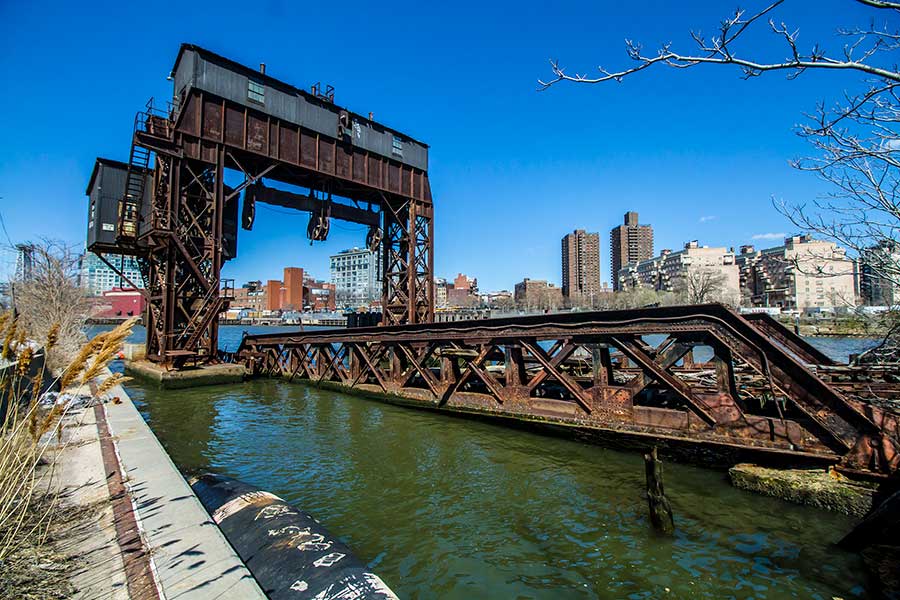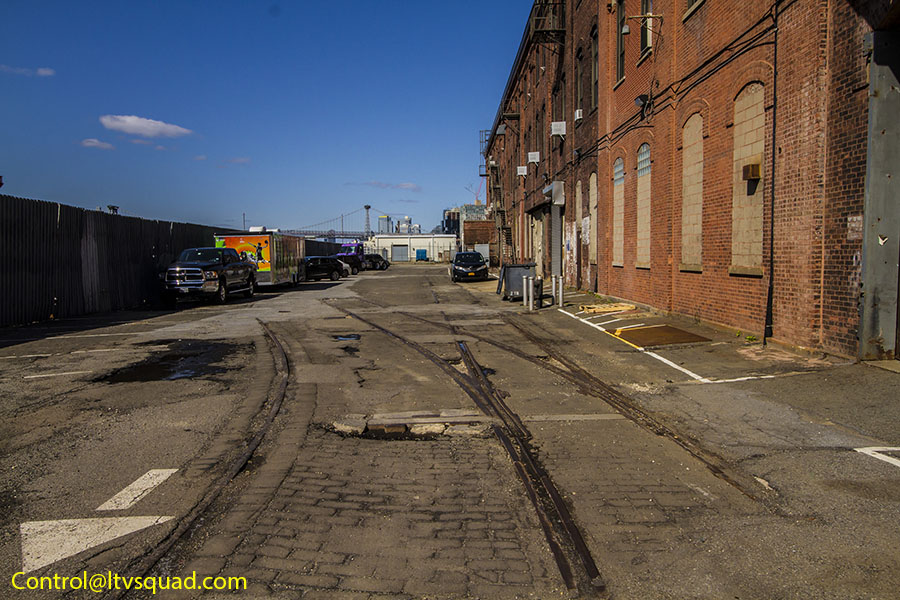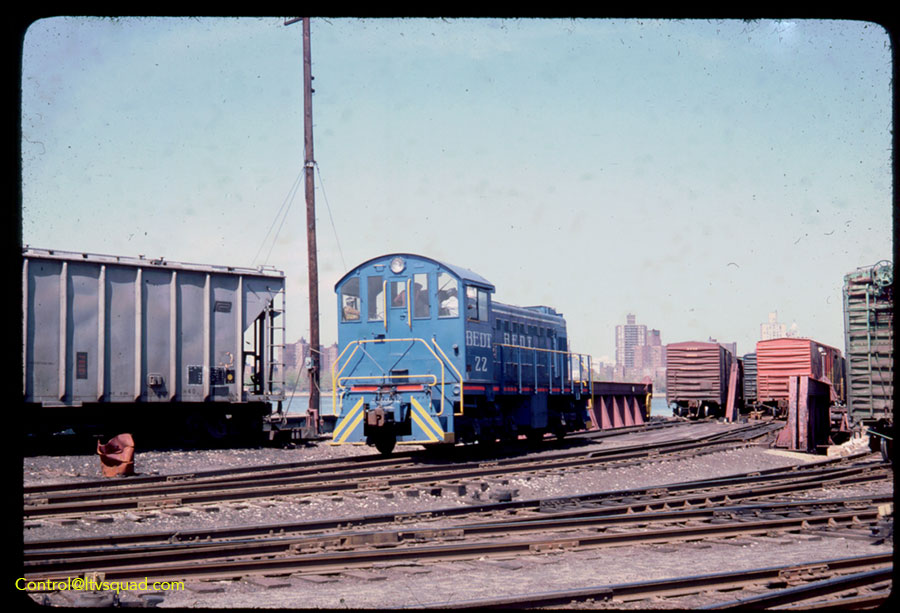
Located all around the navy yard are amazing sets of railway tracks that were used to connect to every large building on the property. While completely disused today, this elaborate network of tracks was integral towards moving various large ship parts from the fabrication buildings (such as Building 128) to the dry docks. The only sections of the property that did not include tracks were the former Hospital grounds and Admirals Row.
The tracks within the navy yard have no land connection to any other railroad, They used a system of carfloats to bring rail cars in and out of the yard. Carfloats are barges equipped with railway tracks. These barges would be connected to land via float bridges—tall metal drawbridge-like structures that raise and lower, connecting the barges’ tracks to the navy yard tracks. These float bridges of course needed the ability to adjust height in order to compensate for the varied tides in New York Harbor.

The tracks around the Navy Yard are of two sizes: One is standard gauge, which any standard US locomotive or rail car can run on. The second set of tracks is ‘wide gauge’. The wide tracks were used specifically by the “Portal Cranes” that ring the dry docks. These massive cranes were used for new ship construction. The majority of them still seem to exist today, though their exact history is undocumented (most seem to have arrived in or around 1966). In some locations, a single track was used for both gauges.



During the period of naval ownership, naval yard employees operated the railroad, with the exception of a small corner of the property where a private company, the Brooklyn Eastern District Terminal railway (BEDT) ‘interchanged’ rail cars with the navy (basically handing off the rail cars to each other).

After the Navy sold the yard to the city, BEDT continued to service the yard, interchanging rail cars with a small ship manufacturer known as SeaTrain.
SeaTrain utilized a set of blue GE 44-ton locomotives to shuffle rail cars around their property, while BEDT would utilize one of their blue Alco locomotives to work the float bridge.
Sea Train went bankrupt in 1979. Not long after, the BEDT also went bankrupt. Its predecessors, the New York Cross Harbor railway and later, New York & New jersey Railroad, have not returned to the Navy Yard. With the navy yard rapidly changing from manufacturing to co-working spaces, movie and TV production, it is highly unlikely a railroad will ever serve the Navy Yard again.
This, however, was not the complete end to trains visiting the Navy Yard. Click on through to Part Two of this story!
If you’re interested in a more detailed history of the Navy Yard, check out my latest book Abandoned Industries of New York Volume 2
Leave a Reply